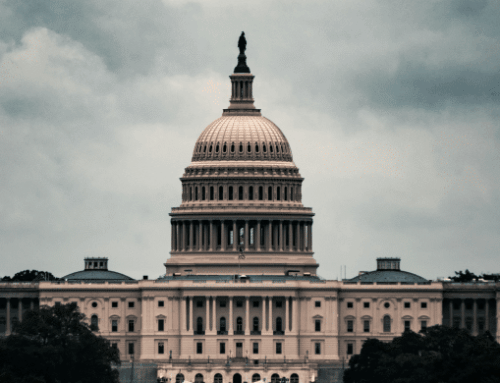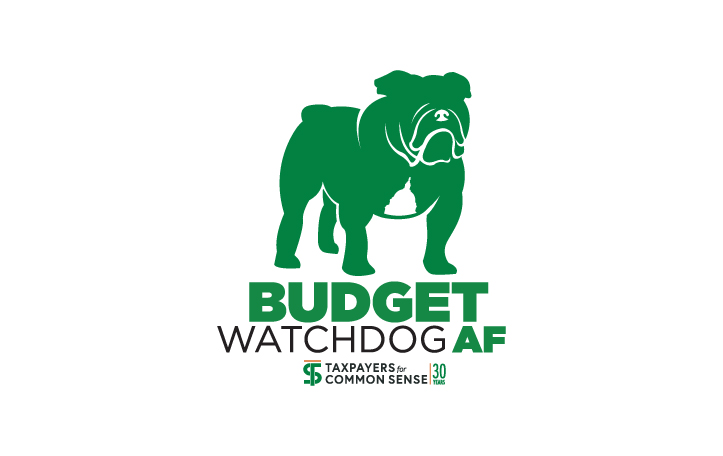At Taxpayers for Common Sense, we’ve been analyzing Pentagon budgets for 30 years and seen a lot of gimmicks and hijinks, but the Fiscal Year 2026 budget process takes the cake. It is a total Charlie Foxtrot. Here’s the tale of the tape.
On June 9, the House Appropriations Committee leadership released draft text of its FY2026 Pentagon spending bill, also known as the Defense Appropriations Act, along with a summary of the package that actually has more detail on program-level spending than the bill text itself. The committee’s Democratic leadership also released its own summary and an accompanying fact sheet. The House Defense Appropriations Subcommittee marked up the bill in a closed session on June 10, and the full committee will mark up the bill on June 12.
Historically, these draft bills are not released before the president’s full budget request for the fiscal year in question. That’s because, in theory, appropriators use the budget request and accompanying budget justification documents as a baseline from which to add or subtract funds for the Pentagon. This approach ensures that lawmakers at least consider the Pentagon’s self-identified funding requests and justifications before deciding on final appropriations. While the White House Office of Budget and Management (OMB) released a budget appendix late last month outlining toplines for Pentagon accounts and the services, and while some budget documents have started to leak, we don’t know for sure if Congress has received the complete Pentagon budget request for FY2026.
If that’s the case, it means appropriators are forging ahead with drafting the Pentagon spending bill without a complete picture of the Pentagon’s priorities. That’s on the Trump Administration. Given a September 30 deadline to pass all twelve appropriations bills before the end of the current fiscal year, Congress is doing its job by getting started on these bills now—even if it is with one legislative hand tied behind their back. Still, the decision to press on without the full request means appropriators are treating the Pentagon budget as a strategy onto itself, rather than letting strategy guide spending decisions. It’s a dangerous, costly way to budget for national security.
Delaying the budget release appears to be a political maneuver on the part of the Trump Administration. According to OMB director Russ Vought, the administration “plans to do the budget after reconciliation,” referring to the budget and tax bill Republicans lawmakers are hoping to pass by July 4. That suggests they’re worried the full budget request may impact votes on reconciliation. Full budget requests include revenue and mandatory spending priorities and shifts—enormous areas of the budget that are not included in the materials released so far. Consequently, the FY2026 budget process is shaping up to be one of the most disorganized we’ve ever seen—and that’s saying something.
Budget Leaks, Mass Confusion
While the OMB has yet to release the full budget request, components of it have started to leak into the public view, underscoring frustration, whether from Congress, within the administration, or both, over the delayed budget rollout. Breaking Defense obtained copies of the Pentagon’s budget requests for Procurement and Research, Development, Test & Evaluation (RDT&E), though it only offered overviews rather than publishing the requests.
Complicating matters further, according to Breaking Defense, “The procurement budget documents, which have been sent to Congress, may not be in their final state, with pages that appear to be missing in the shipbuilding section–potentially pointing to a further revision that could come before budget documents are publicly released in the coming weeks.”
Meanwhile, Inside Defense reported that the administration sent two different budget requests to Congress without releasing them publicly, one that includes funds from the yet-to-pass reconciliation bill, and one that does not. It’s unclear if the version of the request that excludes reconciliation mirrors the baseline request in the version that includes reconciliation or seeks more money through regular appropriations in case reconciliation fails.
It’s also unclear if all of Congress has received these dueling requests. During the House Defense Appropriations Subcommittee hearing on June 10, Appropriations Committee Ranking Member Rosa DeLauro (D-CT) took the administration to task for its failure to share budget details, saying, “We don’t have anything today. We have zip, nada at knowing where you’re going… You could talk percentages, you could talk about whatever you want, but unless this committee sees dollars and cents and where … your plan is, then we may reconsider what you need to do to go forward. Give us the details.” While, based on the leaks we’re seeing, the committee may have had some budget documents in hand at this point, it’s unclear when they may have received them, and so far we’ve seen no indication that the leaks include the Pentagon’s budget justification books, which are meant to back up the requests with the strategic rationales necessary to evaluate them.
Around the same time that these budget request documents leaked, Politico Pro published the committee report (in two parts) accompanying the House’s draft Pentagon spending bill. The leaked report sheds some light on how the committee is forging ahead without the full budget request. Normally, the funding tables in these reports include a column for the president’s budget request next to a column for the committee’s recommendation. In the leaked report however, appropriators replaced the column that would normally show the president’s program-level requests with the FY2025 enacted spending for each line item—funding which was largely capped at FY2024 levels under the full-year continuing resolution.
That’s a big problem. Individual programs can require dramatically different funding levels depending on the year in question, and without the budget justification documents that normally accompany the full budget release, Congress does not have a reliable method for tracking those program levels needs. So when they drafted the Pentagon spending bill, House appropriators were likely either working off of an incomplete FY2026 request, or simply looking at the future spending columns in the FY2025 budget request as a rough measure of FY2026 spending needs. Either way, it’s not a holistic budgeting process—it’s a broken one.
Hopefully, after the full budget is released, appropriators will release updated funding tables for the FY2026 Pentagon spending bill that compare their funding levels to the FY2026 budget request. Otherwise, tracking congressional Pentagon budget increases, something we’ve been doing for years, will become even more difficult. Typically, we define congressional increases for the Pentagon’s Procurement and RDT&E accounts as any increase in spending relative to the Pentagon’s budget request. But if appropriators don’t eventually compare their spending levels to the FY2026 request, it may be prohibitively difficult to recreate those comparisons. In other words, as untransparent as the status quo already was, the late budget request may make it even more difficult to track Congress’ parochial program increases to the Pentagon budget.
All that said, here’s a look at the draft bill’s toplines in comparison to the budget appendix, and a look at some of the program-level funding in the draft bill.
Topline Tracking
The way the White House asks for money isn’t always aligned with how Congress authorizes and appropriates it (nor are congressional authorizations always aligned with appropriations in terms of where the funding shows up). That’s not new, it’s been a staple of the budget process for a while. For instance, the White House budget appendix for the Pentagon includes Military Construction funding, while Congress appropriates Military Construction funds through a separate appropriations bill. The House draft also includes certain funds for the intelligence community that were not included in the Pentagon’s section of the budget appendix. If we exclude those line items, the White House’s budget appendix requests $817,857,463,000 for the Pentagon, while the House draft text includes $825,714,230,000. If we include the intelligence community funding (which was included in a separate section of the budget appendix), the appendix requests $819,022,275,000 for the Pentagon, while the House draft text includes $826,870,230,000.
However, the summary page released by Republican leadership claims that the draft bill “provides a total discretionary allocation of $831.5 billion, which is flat to the Fiscal Year 2025 enacted level… and adheres to the discretionary budget topline put forward in the OMB budget request.” That’s not what we see in the bill text, or the FY26 budget appendix, which we broke down by line item and compared to the FY2025 and FY2026 requests in this spreadsheet, but it’s possible we missed something, or that the text includes funding or assumptions that don’t show up as line items. A summary of the toplines (according to the line items in the appendix and bill text) is below.

Whatever the topline in the bill comes to, if reconciliation does pass, the bill’s topline will become more like a baseline, upon which the House and Senate Armed Services Committees will pile reconciliation funding by the tens of billions (the skinny budget proposes over $119 billion for defense through reconciliation in FY26).
Given that the administration included reconciliation funding in its skinny budget and presumably would have requested more funding through the regular appropriations process were it not for the prospect of boosting the Pentagon budget through reconciliation, the topline numbers in the draft bill don’t tell us much about how closely Congress is adhering to the administration’s priorities. And without a full budget request, funding tables for the draft bill, and funding tables detailing how reconciliation dollars will be spent (if it passes), we really won’t have a clear picture of how Congress is reacting to the administration’s budget request for FY2026.
Program-Level Funding in the Draft Bill
While we have little to compare it to without a full budget request, the summary of the draft House bill offers some details on program level funding. Rather than listing all of it, we’ll just take issue with some funding that should either be reduced or cut entirely.
$13 billion for Golden Dome
As we’re said before, the Golden Dome is a giant waste of taxpayer dollars—it’s main goal is defending the U.S. against ICBMs and hypersonic missiles, but the technology doesn’t exist, and the project will cost hundreds of billions of dollars, at least. This $13 billion would also come on top of the $25 billion for Golden Dome in the budget reconciliation bill, should it pass.
$8.5 billion for 69 F-35s
The F-35 is a bad investment. It’s only fully operational 30 percent of the time. This money would go farther on systems that actually meet their performance goals. Enough said.
$2.2 billion for continued development and modernization of the F-35
The F-35 already has three variants, and each has a series of different configurations with different upgrades on board thanks to whoever had the bright idea to start buying F-35s before they made it through development. This money would complicate sustainment for the failing program even further by seeking to upgrade F-35s once again. It’s a bad idea.
$4.2 billion for 6th generation aircraft
We wrote about the sixth-generation fighters in a report last year, and found that both the Air Force and Navy programs are on track to repeat many of the mistakes of the F-35. Until Congress gets clear answers on how these programs will avoid those pitfalls, we’re not convinced this funding will offer a good return on investment.
Unspecified amount for the Sentinel ICBM
The Sentinel ICBM, which we also wrote a report on last year, is mentioned in the House bill summary, but neither the summary nor the bill indicate how much funding it may receive. But even a dollar would be too much to spend on this antiquated, unnecessary, and overbudget program.
Looking Ahead
We’ll be keeping tabs on this Pentagon budget “process,” to put it generously, as it unfolds through regular appropriations and reconciliation. Stay tuned.










